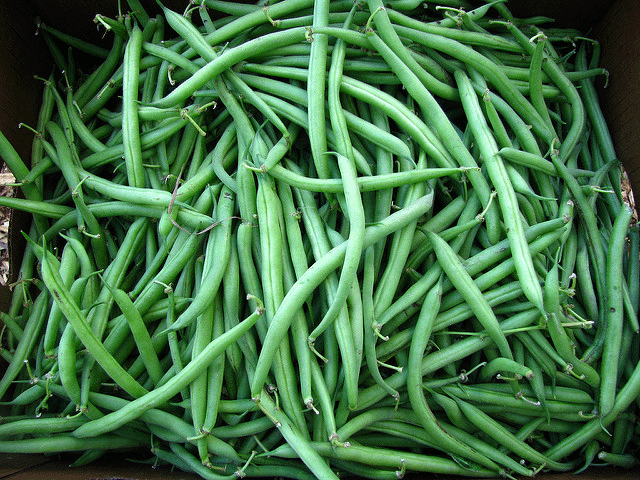Green, string, or snap beans are among the easiest and most productive backyard vegetable crops. A gift of the indigenous people of the New World to the European colonists in the sixteenth century, bean seeds are easy to save and have been carried around the world, resulting in a vast number of heirloom varieties.
Beans may be climbing, as with pole beans, or nonclimbing, as with “bush” beans. An intermediate form is known as a “half-runner” type. Half-runners only reach about 4 feet (1.25 m) in height, whereas pole beans can grow twice as tall.
The shape, size, and color of pods and the beans within them have also contributed to bean diversity. Yellow-pod or “wax” beans have a tender texture; “Italian” types produce long, flat pods with large seeds; while “French” or filet beans are slender and seldom longer than a pencil.
WHEN TO PLANT
You can plant beans a bit earlier than most cool weather crops, but if the growing bed is too chilly, the seeds will rot before they germinate. Using the straw bale method, it’s best to plant beans no earlier than 1 month prior to the average last frost date in your area.
HOW MUCH TO GROW
You can pick bush beans about three times before they’re exhausted, whereas pole beans will bear over a period of 2 or 3 months—or even longer with reduced productivity. A bale of pole beans will probably yield 1 pound (450 g) of harvest every 2 days in warm summer weather. Each bush bean plant will produce ½ pound (225 g) per picking, and the half-runner types, if grown like pole beans, are somewhere in between in terms of productivity.
PESTS AND DISEASES
In North America, the most serious bean pest is the Mexican bean beetle, which you can control by picking them off, spraying them with neem oil, or timing plantings to coincide with low points in the beetle’s population cycle. You can control other, less-specialized chewing pests, such as Japanese beetles, by these methods as well.
Beans are subject to a number of viral and fungal diseases, most of which are transferred from plant to plant by insects. Given that beans produce a crop in about 2 months from seed, it’s easier to replant than to try to control a disease problem. Many bean varieties will go right on producing despite an infestation.
STARTING YOUR OWN SEEDS
You certainly can start beans indoors and transplant them to the garden using biodegradable pots, but they’re so easy to grow from direct seeding that most people avoid the trouble of starting them indoors. Simply press the seeds about 1 inch (2.5 cm) into a layer of soil-less growing mix spread on top of the bale with about 2 inches (5 cm) between each seed. Come back and thin out every other plant when they have two true leaves.
HARVESTING, STORING, AND PRESERVING
Pick beans frequently to keep the plants productive, and select pods that have reached the size typical for the variety you’re planting. This can vary greatly depending upon the cultivar.
Fresh beans will keep a few days in the refrigerator but are best when eaten the day of harvest. For longerterm storage, trim fresh beans, plunge them into rapidly boiling salted water for 3 minutes to blanch, drain, and plunge them into ice water to stop the cooking and set the color. These beans will keep a week or more in the refrigerator, or you can pack them into freezer containers and freeze for up to 6 months. Or you can can green beans using a pressure cooker. They’ll keep for a year or more if properly canned and stored in a cool, dark place.


